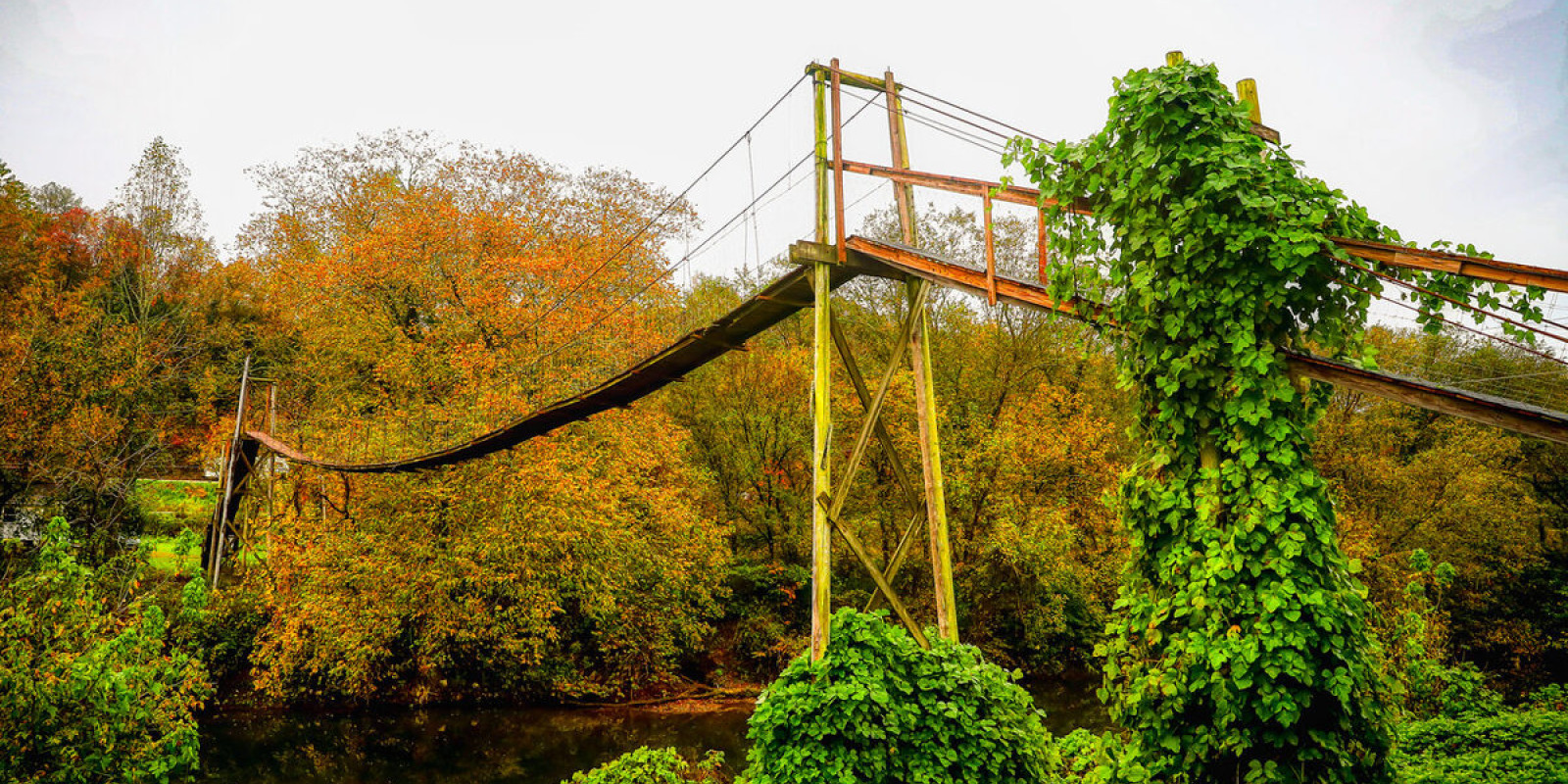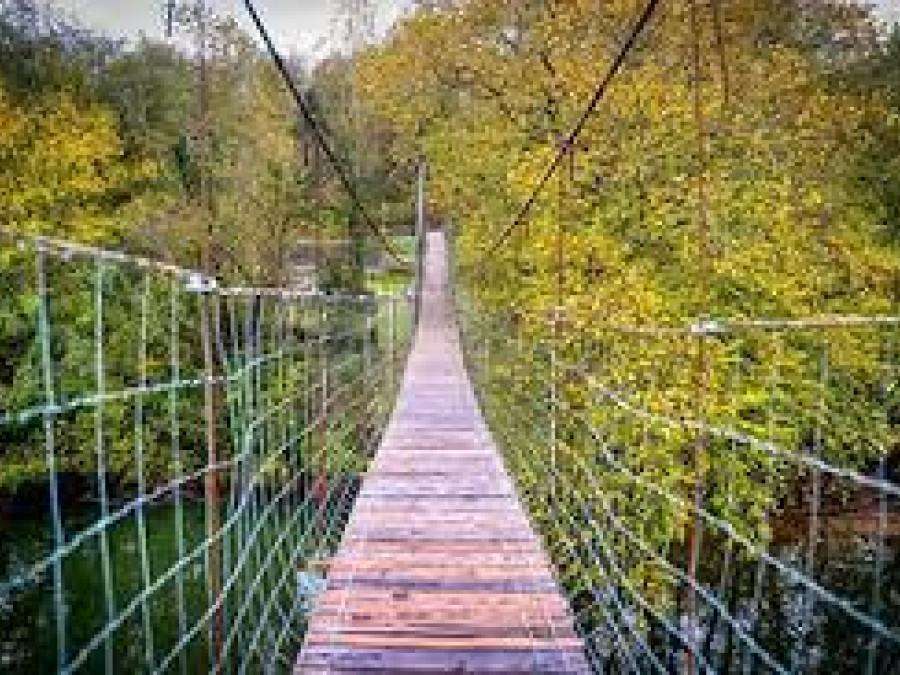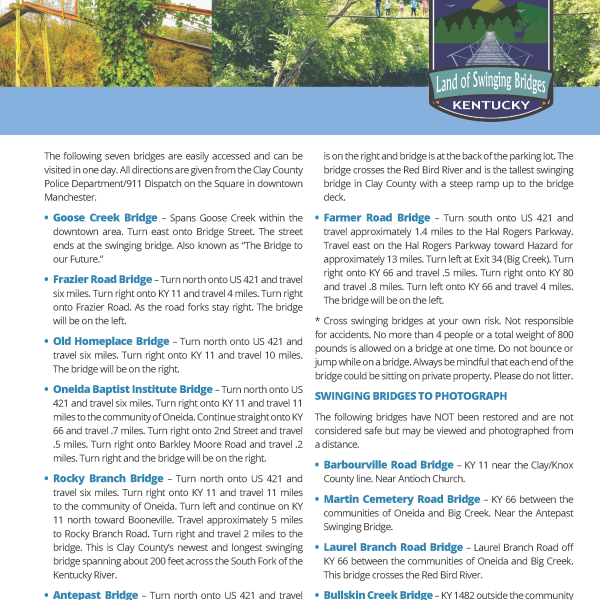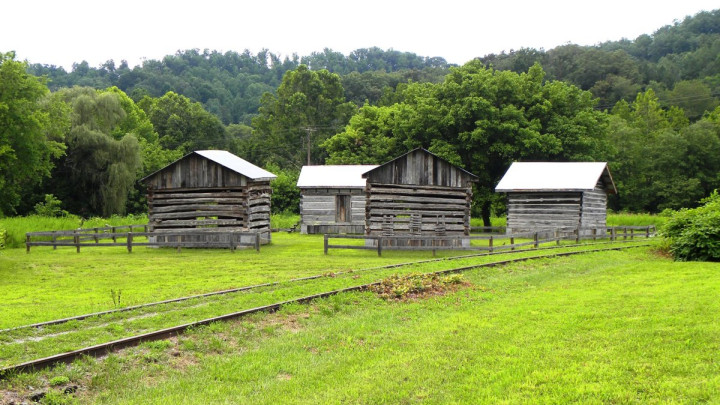Clay County’s swinging bridges are historic pedestrian bridges towering above the rivers and creeks. During floods they were one of the only ways to cross the waterways. In some remote areas of Clay County, this is still true today. These suspension footbridges are often called swinging bridges because the bridge sways beneath your feet as you walk across. They are also referred to as rope bridges due to their historic origin based on the ancient Inca rope bridge.
Swinging bridges would span a wide river without the need for foundation pillars in the middle. This meant there was no obstruction to river traffic and no danger of the pier being damaged during floods. They were also cheaper to build than pier designs. Typical construction would start with a ball of twine to judge the curve and distance. The upright piers were constructed first before being pulled into position by men in boats or on horses or mules. The cable was then dragged across by hand using a wheel or pulley. Men would mix cement and haul river gravel and timbers from local farms.
Many of these historic relics of Appalachian history still tower over Goose Creek, Red Bird, and the South Fork Rivers. Visit Clay County, the “Land of Swinging Bridges,” and discover the romance, history, and adventure of these cherished swinging bridges.





